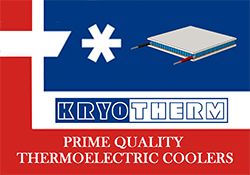 As Steve Jackson, business development manager of Thermal Management at Sapa Extrusions North America, notes in our interview, “When you consider that this market works around the clock to increase efficiency by only 1%, a step change such as this is quite revolutionary.” Steve is of course referring to a story we reported back in August, “Sapa Group North American Technical Center Develops New Modular Method to Manufacture High Ratio Air Cooled Heat Sinks” coolingZONE was able to catch up with Steve to get the story behind the story as to Sapa’s industry leading development.
As Steve Jackson, business development manager of Thermal Management at Sapa Extrusions North America, notes in our interview, “When you consider that this market works around the clock to increase efficiency by only 1%, a step change such as this is quite revolutionary.” Steve is of course referring to a story we reported back in August, “Sapa Group North American Technical Center Develops New Modular Method to Manufacture High Ratio Air Cooled Heat Sinks” coolingZONE was able to catch up with Steve to get the story behind the story as to Sapa’s industry leading development.
coolingZONE: Can you tell our readers a little about Sapa and about Sapa’s North American Technical Center?
Steve Jackson: Sapa Extrusions North America, part of the world’s largest aluminum profile company, is the North American leader in common alloy extruded aluminum products. Sapa Extrusions North America operates 16 plants with 55 presses strategically located throughout the U.S. and Canada, supporting markets including Distribution, Industrial & Consumer Durables, Commercial & Mass Transportation, Automotive Applications, Solar & Renewable Energy, and Thermal Management. Continuing growth and capital investment provide us with unique, integrated assets that help us to be an efficient and competitive supplier. We develop a comprehensive understanding of each of our customer’s businesses in order to establish close long-term relationships.
Our North American Technical Center (NATC) in Portland, Oregon provides advanced technical support in product design and development for Sapa’s North American operations. The NATC team includes specialists with engineering, metallurgy, machining and product design backgrounds. We provide innovative solutions for new end-use applications that benefit our customers.
coolingZONE: What prompted the development of this new modular method for the manufacture of air cooled heat sinks?
Steve Jackson: We developed Sapa’s modular heat sinks to provide our customers with an optimal total solution. Although Sapa has the capability to extrude heat sinks up to ratios of 19:1 in the United States, we received numerous inquiries from companies in the power industry that needed greater ratios. At the same time, the LED light industry was looking for extrusions larger than the 20” width we can extrude.
Although bonded fin heat sinks are often used in these applications, we decided to experiment with one of our core competencies, namely, friction stir welding (FSW). Since these early trial runs, Sapa has successfully used FSW in the United States, Europe and in Asia to join both aluminum to aluminum and aluminum to copper. Notably, we can now readily duplicate this process at extrusion facilities across North America with no additional equipment investment required.
coolingZONE: Sapa is in the extrusion business when it comes to thermal management. Research and investment in air cooled heat sinks make sense. With liquid cooling being ever more accepted and deployed, wouldn’t a line of heat pipes or cold plates have been good, too?
Steve Jackson: As you point out, the plants Sapa acquired in North America have been supplying extruded heat sinks for 30+ years to other heat sink manufacturers, however, Sapa Europe and Sapa Asia have vastly greater experience in being a complete thermal management partner. Four years ago when we established our NATC, we started offering thermal management engineering to our US-based global accounts. We have since expanded this offering to all thermal management prospects and customers.
Three years ago, we started fabricating the extrusions we made and then two years ago, we manufactured our first cold plates in North America for a European-based company. We are currently working on specific designs for several large companies and we plan to introduce our line of cold plates in late 2013. In addition, we plan to expand Sapa’s overall presence in the heat pipe market. Although Sapa Asia is presently in this market, Sapa North America intends to join it sometime in 2014.
coolingZONE: Many times the technology to manufacture new products is even more advanced than the product itself. Can you comment on Sapa’s development journey for the friction welding technique that joins flush metal surfaces through the mechanical action of a rotating tool? Did that take many iterations to have a scalable, repeatable process?
Steve Jackson: FSW technology is not all that new and has actually been utilized by different industries for years. It is not as well-known as it could be because it is a proprietary licensed process and it utilizes automated equipment not typically found at traditional “weld shops.” Sapa North America currently uses FSW to assemble trains, subway cars and bridge decks. In addition, Sapa Asia has used FSW in thermal management applications, specifically to bond copper base plates to aluminum castings.
Based on Sapa thermal software, our engineering team is able to design several products and, by utilizing our thermal laboratory, we are able to confirm the theoretical calculations. Since we can essentially extrude any profile we design, we are able to revise profiles to meet any thermal requirements, while remaining extremely cost-effective.
Since we began working with the FSW process at our NATC research and development facility in Portland, we are now able to replicate the process by training our process engineers at facilities across North America.
coolingZONE: Every R&D project has its own story. Can you give us any one particular highlight of the project; the “aha” moment where you knew you had something special in your lab?
Steve Jackson: When we began this journey, we were confident that the FSW process would be more efficient than bonded fin heat sinks. Since we eliminate all filler material that acts as an insulator, we knew that it would be cost competitive (e.g., since 100% of the components are extruded, coil distributors and other traditional subcomponents are eliminated). In terms of “aha” moments, there were actually two. The first was when we initially performed tests and confirmed that the modular heat sinks were 8% more thermal efficient than comparable bonded fin heat sinks (notably, these calculations and tests were done in a very conservative manner, so it is likely the thermal efficiency is even greater).
The second, and more impactful “aha” moment, was when we presented our findings to an extrusion customer who also was a significant user of bonded fin products. The customer facetiously called us “sand-baggers” because in their application, they believed the process was closer to 15% more efficient, and would also provide them with a more consistent, higher quality solution. When you consider that this market works around the clock to increase efficiency by only 1%, a step change such as this is quite revolutionary.
We want to thank Steve for his taking time for our interview and filling our readers in on Sapa Extrusions exciting development. If any of our readers want to follow up with Steve directly, you can contact him at Sapa Extrusions by emailing Emily Geesaman at [email protected]




Will like to have more details on friction welded heat sinks.
This white paper from Sapa will help you … http://www.sapagroup.com/pages/271236/Sapa_Friction_Stir_Welding.pdf